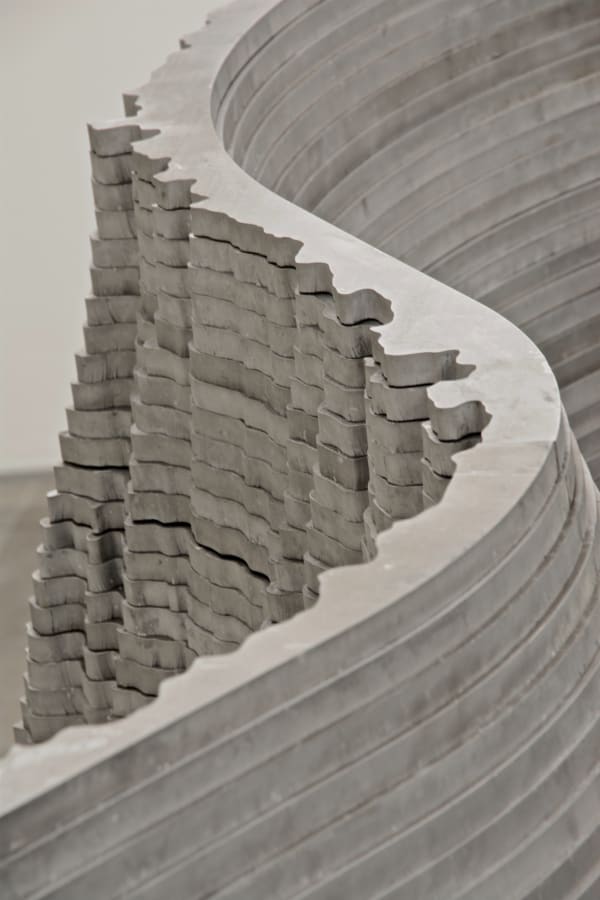-

-
"Viewed from the outside, Anish Kapoor's Mountain rises in front of us like a solid invincible structure. It possesses an air of granduer, furrowed and restless yet able to illicit a profound sense of awe in the onlooker. We find ourselves seduced by the challenge of scaling its heights in order to feel an even greater exhaltation and release when reaching the top. The Mountain's rim is disconcertingly narrow, and anyone standing there would be in danger of losing balance."
Richard Cork
-
At the end of the 1980s, Kapoor visited Uluru or Ayers Rock in the Northern Territory of Australia. The visit was to prove of immense significance.
“…a very powerful proto-place and quite the most religious place I’ve ever been to…I’d get up at four o’clock every morning, drive to it, and spend the whole day doing the circumference walk. Unbelievable things revealed themselves every day. I felt deeply connected with it, and with a kind of possible interpretation, a symbolic interpretation of the holes and the strips of stone that seem to be leaning against it. I was amazed, not at the monolith, but at the way the monolith seemed to be made up of symbolic events.”
Anish Kapoor
-
"...we find ourselves confronted by absense rather than presence."
"Kapoor however is not content with engendering a straightforward feeling of delight, his work is complex and it's multi-layered meanings become clear once we succeed in peering over the apex of Mountain. For there, instead of creating a peak, or even a reassuringly flat ledge, he leads our eyes down into a void. Suddenly, without any warning, we find ourselves confronted by absense rather than presence." Richard Cork
-

-

-
For more details and price contact the gallery
-








